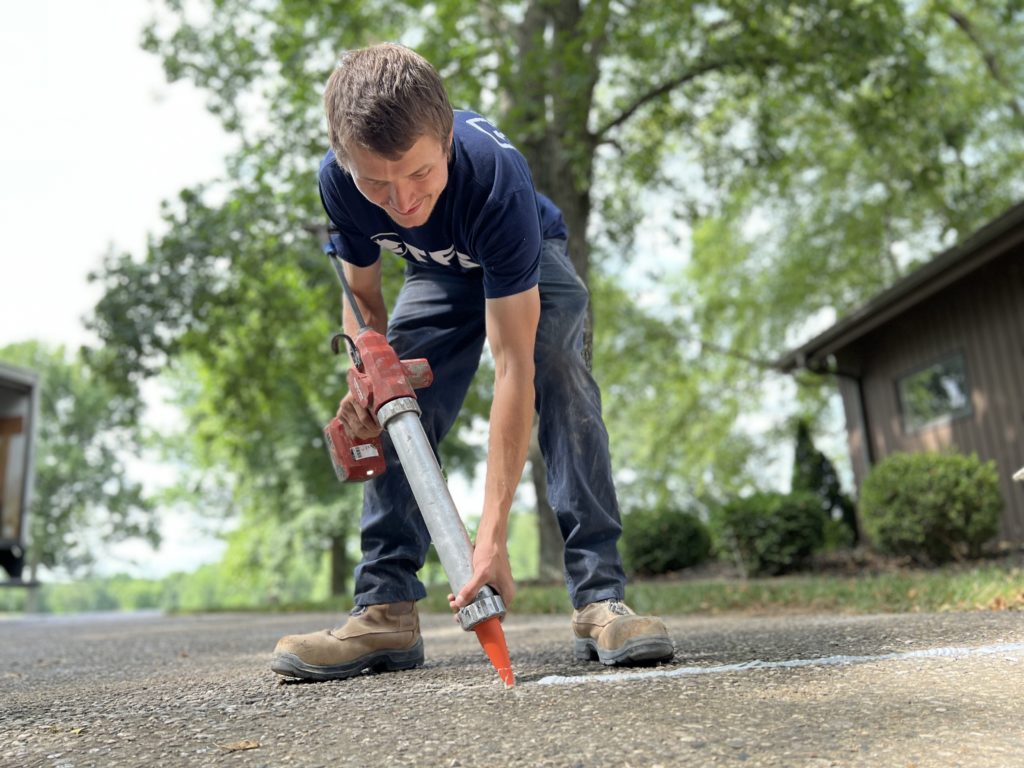Have you noticed cracking along your driveway? What about sinking steps on your front porch? If you have, don’t worry. You are not alone. Just about every home has concrete, which means just about every home has concrete cracking or sinking at some point. Between driveways, sidewalks, patios, steps, and pool decks, there’s a lot of concrete around your home.
Concrete cracking/damage is a normal occurrence in homes. However, just because it’s normal doesn’t mean that you should have to deal with it. In fact, we believe that you deserve to enjoy your patios and pool decks without worrying about tripping hazards that uneven concrete can create. Whether it be lifting, stabilizing, replacing, or repairing, there are enough options available to where you can feel secure and confident in your concrete.
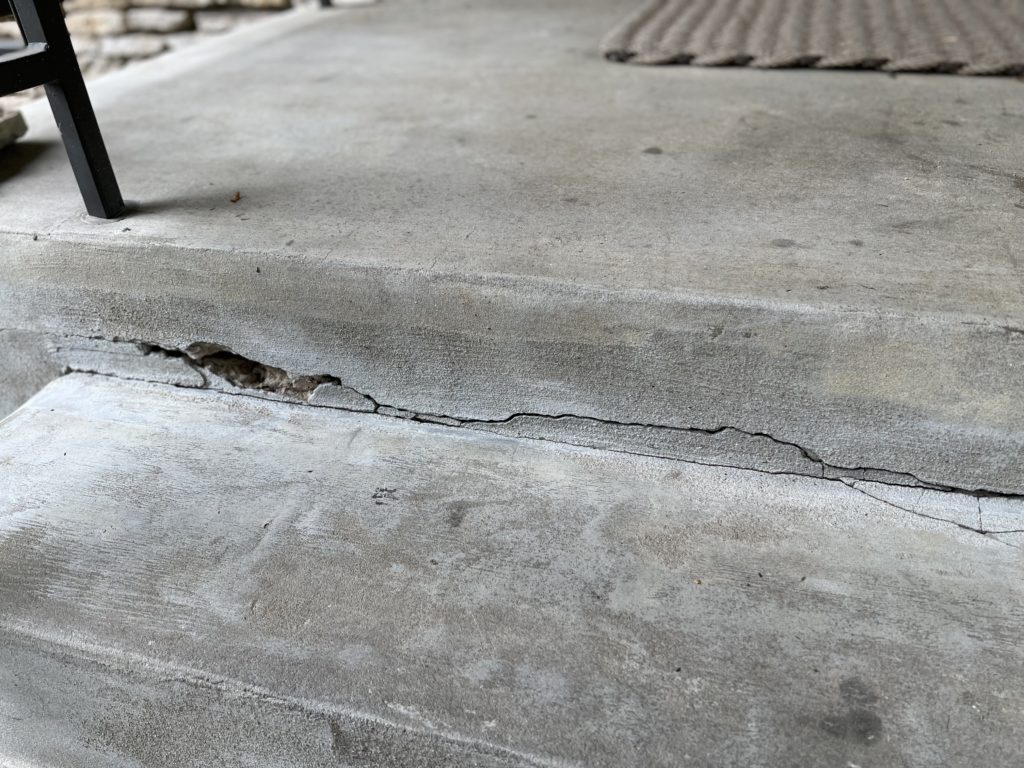
Where Do Concrete Issues Come From?
Concrete cracks can form in a variety of ways. Over the course of time, there will be natural aging and damaging issues that occur. Additionally, intense weather can expedite these problems. While any weather can create issues, most homeowners find that their concrete suffers the most damage during the winter months. As you probably know, winter can be a bit volatile. Forty degrees and rainy one day and freezing with ice the next. This does not make ideal conditions for concrete preservation.
Aside from winter months, heavy rains can also affect the quality of your concrete. When your area has intense rainfall, the water seeps into the soil under your concrete and causes destabilization and damage to the concrete. Seeing as the rain is not a controlled flow of water, the soil erosion will not displace evenly, which means your concrete will not settle evenly, putting tension on certain pressure points. Eventually, the concrete is not strong enough to withstand the pressure and it cracks.
Unfortunately, dryer areas are still susceptible to concrete cracks. As stated above, the condition of the soil under your concrete plays a large role in the quality of the concrete. Dry areas mean dry soil, which contracts due to the absence of moisture. When the soil contracts, it leaves voids underneath your concrete, leading to more pressure and cracks. Now that some of the root causes have been identified, let’s talk about how to eliminate these issues.
Repair vs. Replacement
When it comes to fixing your concrete, there are two options: repair or replace. Without question, repairing your concrete is preferred. While repairing concrete fixes the cracks in the current slab, replacing your concrete would be replacing all of the concrete in an area. The process of replacing the concrete is going to cost you time and money, according to Spaulding Concrete. Spaulding states that a replacement process can cost anywhere from $6,000 to $12,000 and take a month for the concrete to be usable. Comparing that to repairment options, which generally cost a fraction of that total and allow you to use the concrete the same day as treatment, everything points in favor of repairing rather than replacing. Furthermore, new concrete is going to crack at some point, meaning that any new concrete will have to be repaired at some point. Replacement should be a last resort option!
How Do I Fix My Concrete?
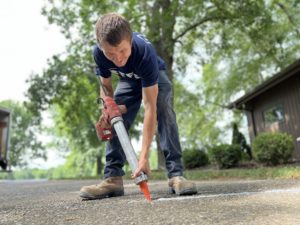
Generally speaking, there are three different methods you can employ to fix your concrete.
The first treatment option is mud jacking. Mud jacking is the process of filling in damaged concrete with a sand, mud, cement, and water mixture. The four elements are compacted together into a single mixture and filled into the damaged portions of the concrete. This process is one that is generally messy, time-consuming, and does not provide a great chance of ending with evened concrete. While those drawbacks exist, the process is relatively cheap, it’s something that a homeowner can easily do, and it works best with severely damaged concrete. However, if you fix the concrete before it deteriorates to the point of mud jacking, there are more beneficial alternatives to mud jacking. One of those is the use of PolyLevel on your concrete.
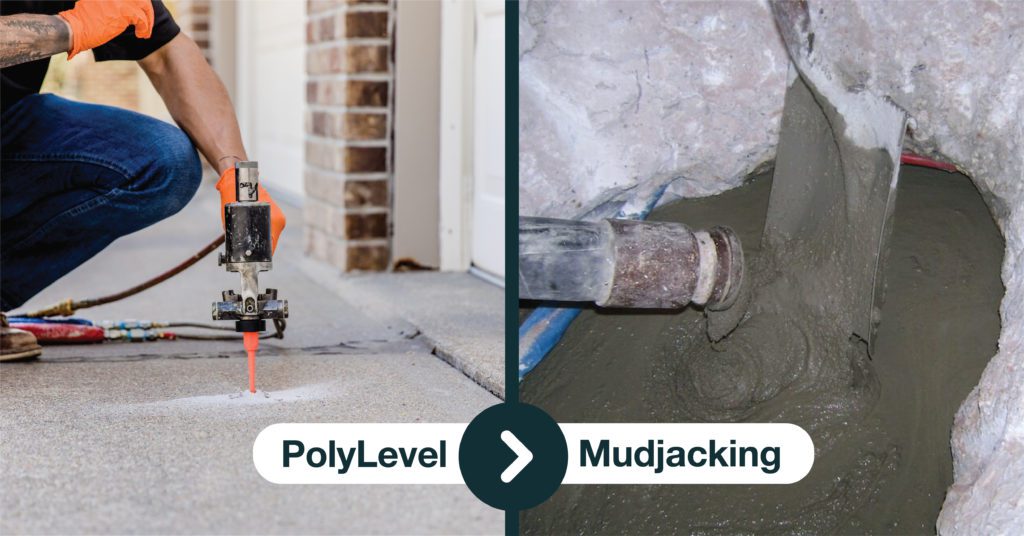
PolyLevel Polyurethane Injection certainly sounds like a mouthful, but the process is much simpler than it seems. The process of using PolyLevel is inserting a Poly Gun into the holes drilled into your concrete and injecting the polyurethane (combined with an expanding agent) into your concrete. This creates a foam-like material that will lift and stabilize your concrete. Just as mud jacking, there are advantages and disadvantages to using the PolyLevel for your concrete repair. Some of the disadvantages are that not all concrete is suitable for it, it DOES require professional installation (whereas mud jacking was something a homeowner could do by themselves), and it does not change the structure of your concrete, which means that issues could return in the future. However, there are some major advantages of using PolyLevel for your home. PolyLevel is generally cheaper than traditional repair options, the foam-like material forms a seal under the concrete that provides protection against water damage, and the use of a professional crew establishes a sense of security by letting you know that the job was done correctly. Additionally, the holes that are drilled in the concrete are no larger than a pencil eraser. This allows the foam-like material to stay underneath the concrete and not make your landscape dirty as mud jacking would. Once the concrete lift is complete, the holes are filled with caulk and sand to match your concrete, making it much less noticeable that work was done under your concrete.
Once your concrete is lifted, you can take preventative measures to extend the life of your concrete repair. NexusPro is a sealant that is used in joints and cracks on your concrete. As previously mentioned, most concrete damage happens because water seeps into your concrete and soil through loose cracks or joints in the material. When you use NexusPro to seal your joints and cracks, you prevent that water damage from occurring in the first place. NexusPro, aside from being extremely proactive, has been proven to last over 20 years, holds up strong against any weather conditions, and the installation process is curated in a way that makes your concrete have a sleek, high-quality look to it.
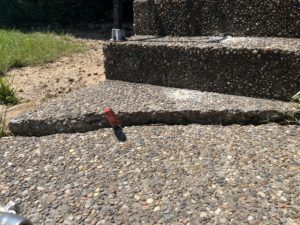
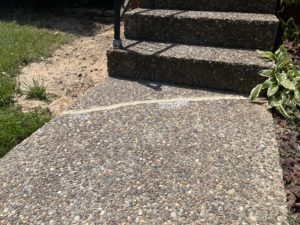
How Do I Know If I Should Repair or Replace My Concrete?
If you aren’t sure where your concrete stands on the scale of repair to replace, get an expert to check it out. We offer free home inspections and can easily let you know whether replacing or repairing is the best route for you. Additionally, our installs come with a lifetime warranty. Along with that, we have a customer care club that provides another level of support to ensure that your home is in the best shape it can be in.
Schedule Your Free Inspection Today
Protect your home by scheduling a free inspection today!
You deserve to spend more time enjoying your home than worrying about the safety of your home.
Call us at 844-468-4674 to get back to enjoying your home!

